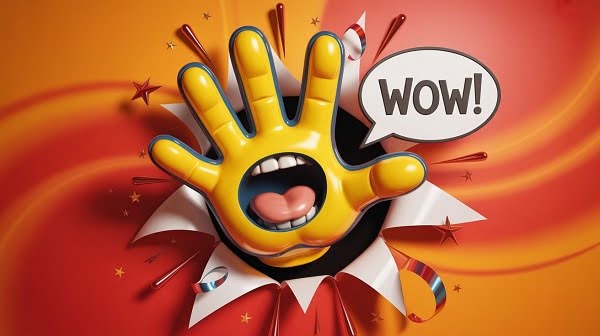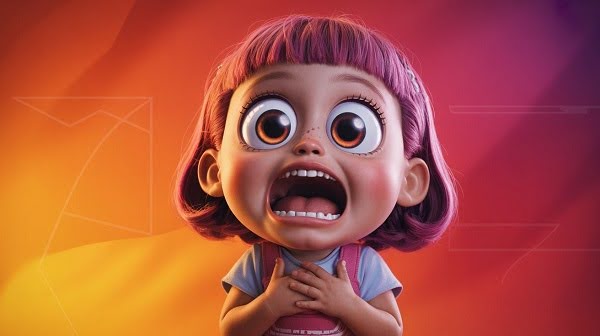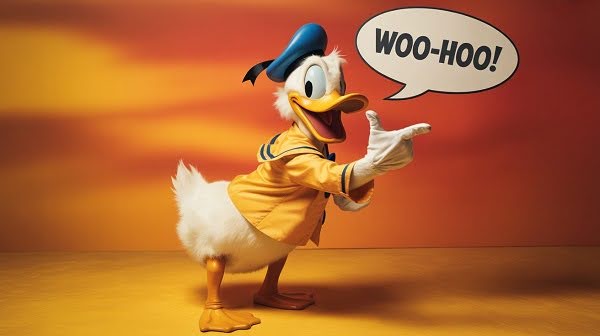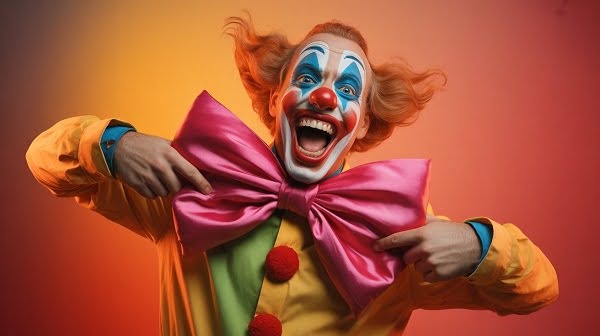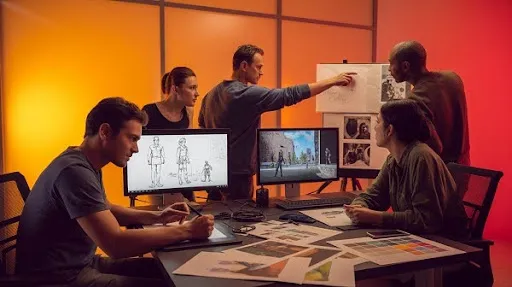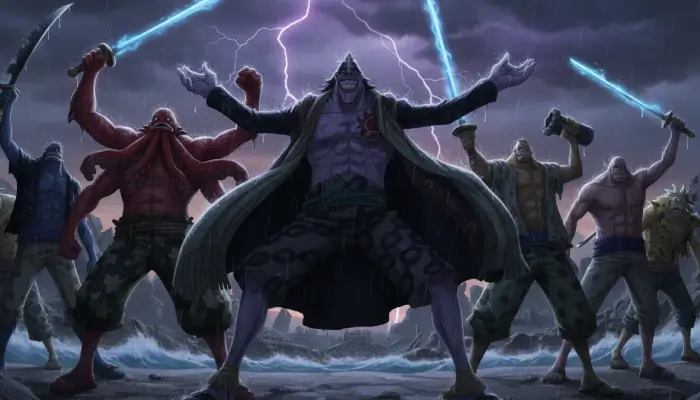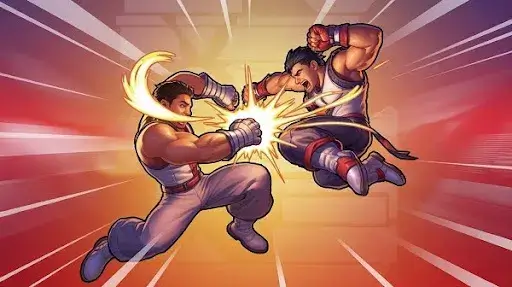A character hops across the frame, lands with a spring, and grins wider than real muscles allow. You get the emotion instantly. That’s the spark of exaggeration in animation, pushing reality just far enough so the moment grabs you.
Take that away, and animation feels stiff. Movements lose their charm, faces look blank, and jokes don’t land. Add exaggeration, and suddenly every scene feels alive. That’s why it sits firmly in Disney’s 12 Principles of Animation and why studios like Prolific Studio still treat it as essential.
It’s not about going wild. It’s controlled play. Done right, it turns ordinary sequences into the kind of scenes people talk about years later.
What is Exaggeration in Animation
Exaggeration doesn’t only mean ballooning heads or stretching arms. At its heart, it’s about making things clear, almost obvious. Animators boost reality so emotions, movements, and story beats can’t be missed.
Think of squash and stretch animation. A ball drops, squashes on impact, stretches on the rebound, and suddenly you sense weight and energy. Characters work the same way. A little extra slump in the shoulders makes sadness hit harder. A smile pushed just beyond the norm feels infectious.
Balance matters. Too flat and the effect is lost. Too much and the audience tunes out. The real skill lies in knowing where that sweet spot is.
Why Disney Made It One of the 12 Principles
Back in the early days, Walt Disney’s team, Frank Thomas, Ollie Johnston, and their peers, realized realism wasn’t enough. Audiences wanted a life that was larger than life. That’s how exaggeration became one of Disney’s 12 Principles of Animation.
Look at Snow White. A subtle exaggeration in the queen’s expressions made her terrifying. Jump forward to Looney Tunes or Tom & Jerry, and exaggeration becomes absurd comedy. Both styles work because they match the intent of the story.
That lesson hasn’t aged. From exaggeration in character design to exaggeration in storytelling, the principle still runs through every memorable animated project.
Exaggeration in Character Design
Character design communicates long before dialogue kicks in. That’s where exaggeration in character design works wonders.
- Broad shoulders suggest strength.
- Sharp, angular lines signal menace.
- Oversized eyes hint at innocence.
- Rounded, bouncy shapes create instant comedy.
Pixar nails this every time. Mr Incredible’s frame shouts raw power. Elastigirl’s stretchiness aligns with her flexible and nurturing personality. Their exaggerated traits are their introduction.
Games use the same trick. Fortnite’s cast is full of bold shapes and wild proportions. In a chaotic battle scene, exaggeration ensures each character is instantly recognizable.
Exaggeration in Facial Expressions
Real faces can be subtle. Animation often needs more. That’s why exaggeration in facial expressions is so important.
Eyes widened beyond normal range, scream surprise. Eyebrows dragged down low hammer home anger. A frown deepened more than natural draws empathy. Even in realistic films, these tweaks stop emotions from being overlooked.
Take Joy in Inside Out. Her giant eyes and unstoppable smile tell you everything before she speaks. That’s exaggeration working overtime.
For brands using affordable 2D animation services, this is gold. A confused face with exaggerated features tells the story faster than narration. In marketing, clarity wins, and exaggeration provides it.
Exaggeration for Humor in Animation
Comedy feeds on the unexpected. Add exaggeration, and the surprise gets sharper and funnier.
A simple slip on a banana peel earns a smirk. Stretch out the limbs, drag the fall, and add an absurd yell, and it becomes a classic gag. That’s exaggeration for humor in animation.
From Looney Tunes chaos to the food storms in Cloudy with a Chance of Meatballs, the funniest scenes are rooted in exaggeration. Even modern ads use it, think mascots with oversized reactions. It sticks because it’s over the top.
Exaggeration in Movement and Action
Action is where exaggeration feels most alive. Animators bend rules that physics would never allow.
- A jump that goes impossibly high.
- A punch that shakes the ground.
- Legs spinning into blurs during a chase.
That’s exaggeration in movement and action. It keeps audiences hooked, even when what they see is impossible.
Look at Into the Spider-Verse. Spider-Man’s swings are exaggerated arcs full of flair. The movement tells you he’s agile and reckless, not just a guy on a rope.
Exaggeration in Timing and Pacing
Timing sets the rhythm of a scene. With exaggeration, that rhythm becomes memorable.
Deliver a punch half a beat sooner, and it feels stronger. Stretch a pause too long, and suddenly it’s comedy. Slow reaction to the extreme, and suspense builds.
In Zootopia, the DMV sloth scene proves the point. His exaggerated slowness turned a throwaway gag into one of the film’s most replayed moments. That’s exaggeration in timing and pacing, finding beats and stretching them until they land.
Exaggeration in Storytelling
Exaggeration shapes more than faces or fights. It builds stories. Props, settings, and side details all benefit from it.
In Beauty and the Beast, the enchanted teapot and candlestick come alive through exaggerated movement. In games, exploding barrels aren’t realistic, but the overblown reaction makes gameplay feel exciting.
That’s exaggeration in storytelling: turning ordinary pieces of the plot into standout moments. A scene hits deeper, a laugh lasts longer, or a quiet beat feels heartbreaking.
Exaggeration in Animated Films
It’s hard to find a classic animation without exaggeration at its core.
- Aladdin: The Genie’s endless transformations exaggerate his humor and wild energy.
- The Incredibles: Body shapes exaggerate strengths and weaknesses.
- Into the Spider-Verse: Stylized exaggeration in movement and effects makes every shot unique.
- Zootopia: Characters’ exaggerated quirks (like the sloth’s pace) became instant memes.
Each example proves that exaggeration in animated films is the secret sauce that makes stories unforgettable.
Exaggeration in Game Design
Games are built to pull players in. One of the fastest ways to do that is exaggeration in game design. It turns every action into something you feel. Swing a sword, and the screen shudders. Hit top speed in a racing game, and the road blurs into streaks of light. Those details don’t exist in real life, but they make play sessions far more exciting.
Take Street Fighter. A punch doesn’t just land, arms stretch, the impact explodes across the screen, and sound effects add weight. Racing games crank it up differently: camera tilts harder, engines roar louder, and cars handle like they’re breaking the laws of physics. These tricks keep players glued.
It’s not just console or PC titles doing this. Mobile games lean on the same principle. In Candy Crush, pieces explode with fireworks. In Clash Royale, character reactions feel oversized compared to their tiny size on-screen. That’s exaggeration, making sure players never lose interest.
For small studios or businesses using affordable 2D animation services, exaggeration can be the shortcut to impact. Even with modest budgets, bold reactions and stylized movement give projects the kind of punch people expect from high-end productions.
How Exaggeration Supports Emotional Storytelling
Stories only matter if they make us feel. In animation, exaggeration in storytelling acts like a megaphone. It makes sure no one misses the emotion behind the moment.
Picture a farewell scene. Live-action might rely on subtle glances and quiet tears. In animation, pushing those gestures further makes them impossible to ignore. A heavier slump of the shoulders or a few more tears falling changes the entire tone.
Pixar’s UP proves the point. In that short opening sequence, Ellie bounces with over-the-top energy while Carl moves slowly, almost stiffly. That contrast, exaggerated just enough, tells us everything about them. Without a word, we care deeply.
Exaggeration isn’t about cheap tricks. It’s about clarity. In marketing animation or explainer videos, an exaggerated worried look or oversized happy grin communicates faster than narration ever could. That’s why brands keep leaning on it.
Balancing Realism and Exaggeration
Exaggeration is powerful, but it’s easy to push it too far. Tip the scale too much, and a serious scene becomes silly. Hold back too much, and the moment feels flat. Balance is the art here.
Pixar usually keeps exaggeration under tight control, letting audiences believe in their characters while still enjoying expressive movement. DreamWorks, on the other hand, often pushes things further, leaning into wilder reactions for comedy. Both approaches work because they fit the story being told.
For animators, the key is intent. A funny chase scene calls for bigger motions. A heartbreaking goodbye needs just enough exaggeration to land without crossing into parody. Even small adjustments, like holding a pause for half a second longer, can change how a scene feels.
Studios such as Prolific Studio apply this balance every day. Clients want projects that look professional but still connect emotionally. Controlled exaggeration makes that possible.
The Role of Squash and Stretch Animation
Squash and stretch animation sits at the core of exaggeration. It’s one of Disney’s 12 Principles of Animation and maybe the easiest one to spot.
Think of a ball. It drops, squashes flat against the floor, then stretches tall as it bounces back. Instantly, you know it has weight and bounce. That tiny exaggeration tells a bigger story about how the object moves.
Apply it to characters, and things get even better. Mickey Mouse’s flexible face, Goofy’s wobbling limbs, or even Bugs Bunny’s quick reactions all depend on squash and stretch. Without it, their comedy wouldn’t land.
Today, the principle shows up in logos, mascots, and brand animations too. A character that stretches when it jumps or squashes when it lands feels fun and approachable. For businesses using 2D animations, exaggeration through squash and stretch makes designs friendlier without needing complex effects.
Why Exaggeration Still Defines Animation Today
Animation tools keep advancing, but exaggeration still does the heavy lifting. Motion capture gives animators lifelike performances, but leave it untouched and it feels stiff. Add exaggeration in timing, expressions, or gestures, and suddenly it’s believable.
Snow White used it to sell fear and charm back in the 1930s. Today, films like Avatar or even hyper-realistic remakes like The Lion King still need exaggeration to keep characters expressive. Audiences haven’t changed much. They still laugh at overblown comedy and tear up when a character’s exaggerated sadness feels just a little too real.
That’s why exaggeration hasn’t gone anywhere. It adapts with the tools but never leaves the art form.
Frequently Asked Questions
Why is exaggeration in animation important?
It makes movement, emotion, and story beats stronger. Without it, animation risks looking stiff and forgettable.
How does it connect to Disney’s 12 Principles of Animation?
Exaggeration is one of those core principles. It overlaps with others like squash and stretch, anticipation, and timing, making it essential for appealing animation.
What’s the difference between exaggeration in films and exaggeration in game design?
Films use it to heighten emotion and storytelling. Games use it not only for the story but also to keep actions clear and satisfying during play.
Can realistic animation styles use exaggeration?
Yes. Even lifelike characters rely on stretched timing or amplified expressions to keep the audience engaged.
How do affordable 2D animation services use exaggeration?
By pushing movement or emotion further, small studios can create memorable projects without needing expensive hyper-realistic visuals.
What’s an example of exaggeration in timing and pacing?
The sloth scene in Zootopia. By dragging out the timing, the joke landed harder and stuck with audience.
Is exaggeration only good for comedy?
Not at all. It powers comedy, but it also deepens suspense, drama, and emotional storytelling.
Final Words
Exaggeration is the principle that separates lifeless motion from characters that stay with you. From exaggeration in facial expressions to exaggeration in timing and pacing, it adds punch to every part of storytelling.
For studios, brands, or creators, ignoring it means missing chances to connect. Embracing it means work that’s clear, emotional, and memorable. That’s why Prolific Studio, one of the best animation studios in Chicago, puts exaggeration at the center of its animation approach. It’s not about wild distortions; it’s about adding life, humor, and energy where it matters most.
If you’re planning an animated campaign or need characters that feel larger than life, start with exaggeration. With the right touch, your story won’t just play on screen. It’ll stick with your audience.

